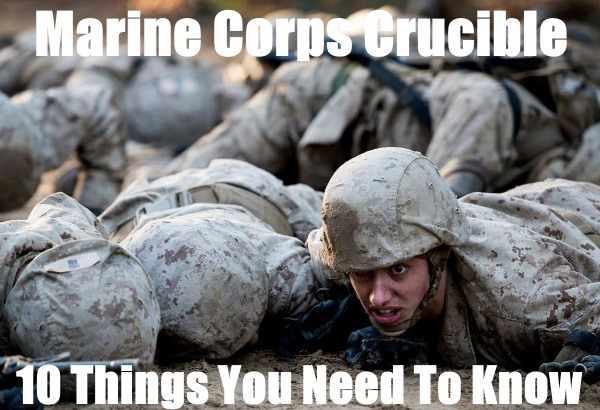Marine Corps recruit training is known for being challenging, both mentally and physically.
Over a 13-week training program, it transforms civilians into elite warfighters who can take on any task.
The Crucible is one of the most challenging parts of Marine Corps Recruit Training.
The Marine Corps Crucible is the turning point for every Marine where they are challenged to their limits.
It is a critical part of recruit training that all Marines will remember for the rest of their lives.
If you want to test your limits and join the Marines or want to know more about the Crucible, here are 10 things you need to know about the Marine Corps Crucible.
Related Article – Marine Corps Boot Camp Schedule
Table of Contents
#1. What is The Marine Corps Crucible?
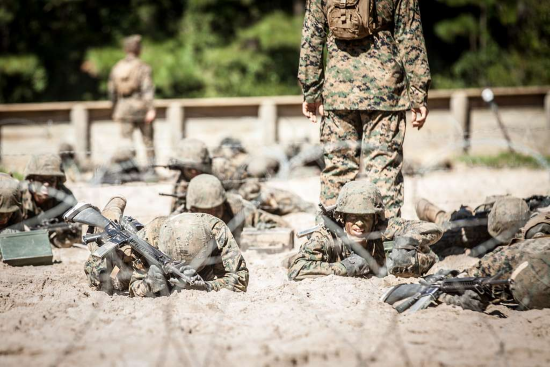
The Crucible is the culminating training event during Marine Corps Recruit Training.
This exercise tests recruits’ physical and mental strength, teamwork, and leadership.
The training event simulates combat stress to see how recruits react and respond with limited sleep and food.
Exercises will focus on teamwork and doing your part during the Crucible.
These challenges include combat exercises, problem-solving tasks, and team-building activities.
During recruit training and the Crucible, you will develop tight teams with a desire for each other to succeed with a refusal to quit.
Ultimately, the Marine Corps Crucible is a rite of passage that symbolizes the path into the elite brotherhood and sisterhood of the United States Marine Corps.
#2. When it Was Created
The first Crucible happened at Marine Corps Recruit Depot Parris Island, South Carolina, in December 1996.
With the creation of the Crucible, the length of recruit training increased by a week.
The 31st Commandant of the Marine Corps, General Charles C. Krulak, approved it to test our new Marines’ capabilities through mental, physical, and moral challenges.
Related Article – Marine Corps Basic Training Guide
#3. Duration
The Crucible is a 54-hour exercise that tests everything recruits have learned from the start of recruit training.
It starts on the tenth week of training, with the first day beginning at 2 a.m.
Throughout the Crucible, recruits will have limited time to rest or sleep.
#4. Location
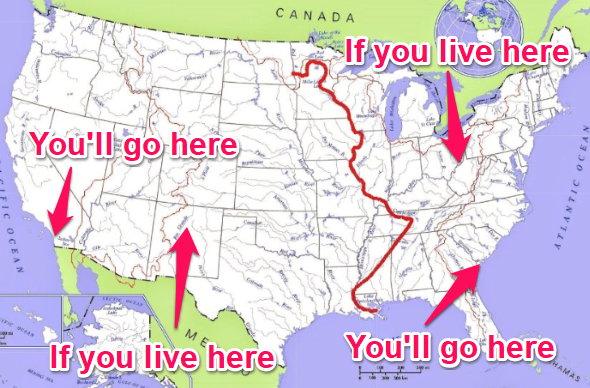
The Crucible occurs at the two Marine Corps Recruit Depots: Parris Island, South Carolina, and San Diego, California.
While the training schedule is the same, there is one aspect that San Diego recruits like to mention.
On their hike, they have a hill called the Reaper, known for its steep climb and difficulty.
A benefit of California is the warmer weather and lower chances of rain.
I graduated from the Parris Island Recruit Training in December 2004.
It was freezing by my Crucible, and I was being destroyed by insects, and it loved to rain down on us.
I think I would have preferred San Diego.
Related Article – Hollywood Marines: San Diego Vs. Parris Island Marines
#5. Pushing Recruits to The Limit
The beginning of Recruit training is to break them down individually and transform the recruits into a team.
Sleep and food deprivation are part of the Crucible, pushing recruits to their limits to simulate a combat environment.
It is through teamwork and selflessness that recruits make it through the Crucible.
#6. Teamwork and Leadership
The Crucible emphasizes the importance of teamwork and leadership within the Marine Corps.
They divided recruits into small teams called “fire teams,” and they must work together to accomplish the mission.
They learn to rely on one another, communicate effectively, and overcome obstacles as a cohesive unit.
Throughout the Crucible, recruits face various team challenges that require them to work together effectively.
These challenges may involve problem-solving exercises, obstacle courses, and timed drills.
The purpose is to foster teamwork, leadership, and communication skills.
When one team member fails, the entire team is punished to instill the importance that a team is only as strong as its weakest link and to inspire them to push past their limits.
#7. Sleep and Food Deprivation
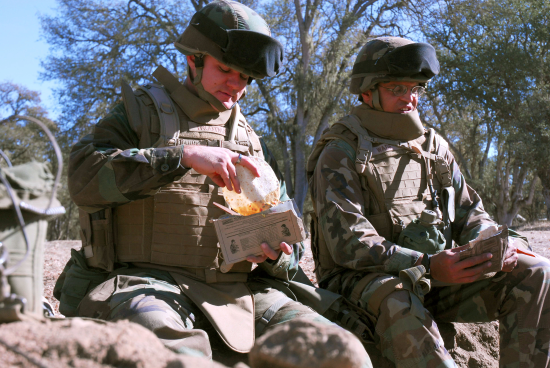
One of the most significant challenges for most recruits to overcome is the lack of sleep and food deprivation.
Throughout recruit training, they provide recruits with three meals a day.
During the Crucible, they provide each with 2.5 MREs (Meal, Ready-to-Eat) and are told to space them out throughout training.
There is no set meal time, and recruits eat when they can between events.
Each MRE is packed full of nutrition, with a total of about 3,000 calories altogether.
I have eaten plenty of them, and I can tell you that most are unpleasant.
On a typical night of the Crucible, you could expect 3 to 4 hours of sleep if you are not selected for a one-hour fire watch.
Within the 54-hour event, each recruit may only sleep 8 to 12 hours.
We slept under a dome they called the “Thunder Dome,” with the temperature outside being roughly 30 degrees.
Recruits now sleep in huts.
#8. Training Events
The events of the Crucible are physically and mentally exhausting, with over 40 miles of hiking, 8 main events, and casualty drills throughout each event.
The 8 main events are the Day Movement Course, Combat Assault Course, Unknown Distance Firing Course, Confidence Course, Pugil Sticks & Body Sparring, Reaction Course, Night Infiltration Course, and the Night March.
Each event has a corresponding lesson from Marine Corps history, which the squad leaders discuss with their fire teams.
The first non-event of the Crucible is roughly a 6-mile hike to the bivouac site.
After they set the bivouac site up, the events of the Crucible begin.
Unknown Distance Course
By this point in recruit training, each recruit has learned how to use their weapons in a controlled environment.
They equip recruits with rounds for the Unknown Distance Course, who then rush to engage targets at unknown distances.
Like every other event during the Crucible, recruits must complete this event as a team.
Confidence Course
Recruits have already faced the confidence course earlier in training.
Recruits must conquer physical obstacles on the Confidence Course, such as climbing walls, rope obstacles, and balancing beams.
They will need to climb over and through many obstacles, many of them being high in the air.
The Obstacle Course
With some similarities to the Confidence Course, recruits must navigate multiple walls, bars, logs, and a rope to finish the course.
They have done this course before, except now it has the heightened challenge of giving each fire team two 35 lb ammo cans.
If a recruit fails an event, the whole fire team fails and does a workout like a burpee and then starts over.
Day Movement Course
The Day Movement Course is only one of the physically challenging events for recruits.
During this course, they simulate bringing ammunition, heavy water jugs, and supplies to a forward element.
Climbing walls, crawling through puddles, and going under barbed wire will tire out the recruits.
Additionally, there are typically a couple of casualty evacuation drills in between.
By the end of the Day Movement Course, recruits will be muddy from crawling through puddles and tunnels.
Combat Assault Course
Recruits climb walls, crawl through tunnels, and dodge barbed wire while experiencing a simulated combat environment.
It is like the Day Movement Course, but with heightened stress with simulated machinegun and mortar fire.
Pugil Sticks and Body Sparring
Throughout the Crucible, recruits build up aggression toward their teammates and instructors.
Pugil Sticks and Body Sparring allow them to blow off some steam.
During pugil sticks, they arm each recruit with a double-sided padded stick to simulate a rifle while wearing a flak jacket and helmet.
Each recruit attacks the other in a one-on-one fight inside the “Octagon.”
The loser goes to the penalty box, where they are encouraged to win by performing various exercises.
After pugil sticks, recruits face off against each other through body sparring.
Think boxing, but only body strikes are allowed.
Reaction Course
The reaction course gives recruits mentally challenging problems that require teamwork and creative thinking.
This challenge is about adapting to the situation and overcoming it.
Night Infiltration Course
The night infiltration course is the day movement course but in the reverse and in the dark.
Being done at night adds confusion and makes it more challenging.
Night March
The Night March is the last event of the Crucible and is the most physically demanding because the recruits are tired and hungry.
Not to mention, it is a strenuous 9-mile hike with a full pack and all your gear.
If you are a San Diego Marine, this is when you would face the Reaper.
Related Article – Marine OCS Guide
#9. EGA Ceremony
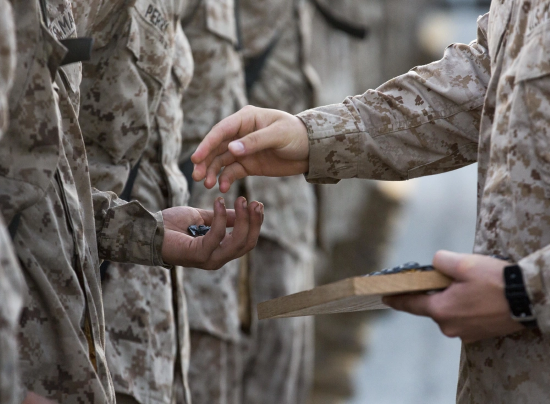
The Eagle, Globe, and Anchor (EGA) Ceremony is at the end of the Night March.
They award recruits the Marine Corps emblem, representing their successful completion of recruit training.
This moment is considered a significant milestone in their journey to becoming Marines, completing the transformation from civilian to Marine.
It is one of the most emotional events in a Marine’s life and a representation of the blood, sweat, and tears that each of us had to go through to become a Marine.
#10. What Happens Next
The Warrior’s Breakfast is the first thing that happens after the EGA ceremony.
During the Warrior’s Breakfast, they give you time to enjoy all you can eat from the chow hall with time to relax.
This might not seem a big deal to outsiders, but throughout recruit training, you are always in a rush, not allowed to have sweets, and barely have enough time to finish your meal.
After that, you will start being talked to as a Marine, get a good night’s rest, and start the fourth phase.
Related Article – Here’s What Happens After Marine Boot Camp
Conclusion
The Marine Corps Crucible is the ultimate test of recruits’ determination, strength, and teamwork.
After the Crucible, each recruit is transformed into a Marine and begins their fourth phase of recruit training.
The Crucible creates Marines and forges individuals into brotherhoods and sisterhoods to take on the challenges our country faces.
It is a rite of passage and instills pride, a sense of purpose, and selflessness, making each person proud to claim the title of United States Marine.
- 10 Best Tactical Vests - June 24, 2024
- 7 Best Tactical Fanny Packs For Concealed Carry - June 20, 2024
- 10 Best Military Tactical Sunglasses - June 20, 2024
Originally posted on June 14, 2023 @ 5:29 pm
Affiliate Disclosure: This post may contain affiliate links. If you click and purchase, I may receive a small commission at no extra cost to you. I only recommend products I have personally vetted. Learn more.
